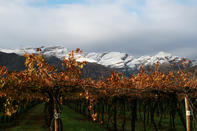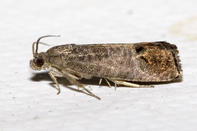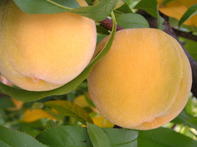
Crop Heat Units
Crop heat units (CHU) express the influence of temperature on a crop’s growth and development. The growth of a plant depends on the total amount of heat to which it is subjected during its lifetime, accumulated as degree days.
Low temperatures slow down and warmer temperatures hasten maturity. In South Africa, we use 10°C, valid for maize, our staple grain crop, as a baseline temperature. The baseline temperature is the temperature below which the plant is damaged, unable to grow or does not produce a crop.
The baseline temperature differs between different crops. For example, the baseline temperature is 4°C for peas, a cool weather crop, 10°C for maize, a summer grain crop, 13°C for citrus and sugarcane and 18ºC for date palms. Other factors also influence crop growth; photoperiod (length of daylight), soil fertility and water in the soil. Ripening can be delayed (high water content) or hastened by low water content in the soil.
Crop Pests and Temperature

Crop pests are also influenced by heat and also have minimum threshold temperatures. Therefore the heat unit/degree-day concept may be used to predict insect appearances and plan a pesticide spray program.
For example, the baseline temperature for codling moth, a pest in citrus, peach, nectarine apple and so on, is 11ºC. The baseline temperature for cotton bollworm is 14ºC, a pest in crops such as peas, beans, wheat, cotton, maize, citrus, cucurbits, potato, tomato and lucerne. While for oriental fruit moth, a major pest in peaches, is only 7ºC.
What are Chill Units?

Chill units are usually called ‘positive chill units’ (PCUs). PCUs are the opposite of heat units. A complex calculation is used to determine the total number of hours below a given temperature for example 4°C. In the USA, the temperatures 4.4°C and 7.2°C are used as the baseline temperatures for determining chilling hours. Crops require cool temperatures for different reasons. Deciduous fruits go into a rest period towards the end of summer.
Growth stands still until the plant has experienced a certain amount of cold during the winter. For example, peaches require temperatures between approximately 2.5°C and 9°C for rest completion. If the minimum cold requirements are not met, it leads to problems in spring, like delayed bud break (peaches - later harvest etc.) or lack of flower bud break (apples - smaller, fewer fruit etc.).
These cause serious reductions in yield. For crops such as peaches and apples, chemicals are sometimes used to induce bud break when PCUs were not adequate to ensure natural bud break. In the deciduous fruit production areas forecasts based on PCUs can be made to predict bud break, blossom freeze risks and harvest dates.
It can also be used to delay bloom, in order to prevent frost damage, or to determine if an area is suitable for the growing of a specific crop. Wheat requires a cold treatment, called vernalization. Vernalization is when low temperatures are needed to stimulate flowering and grain production.

Source Water Research Commission